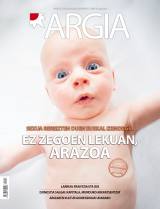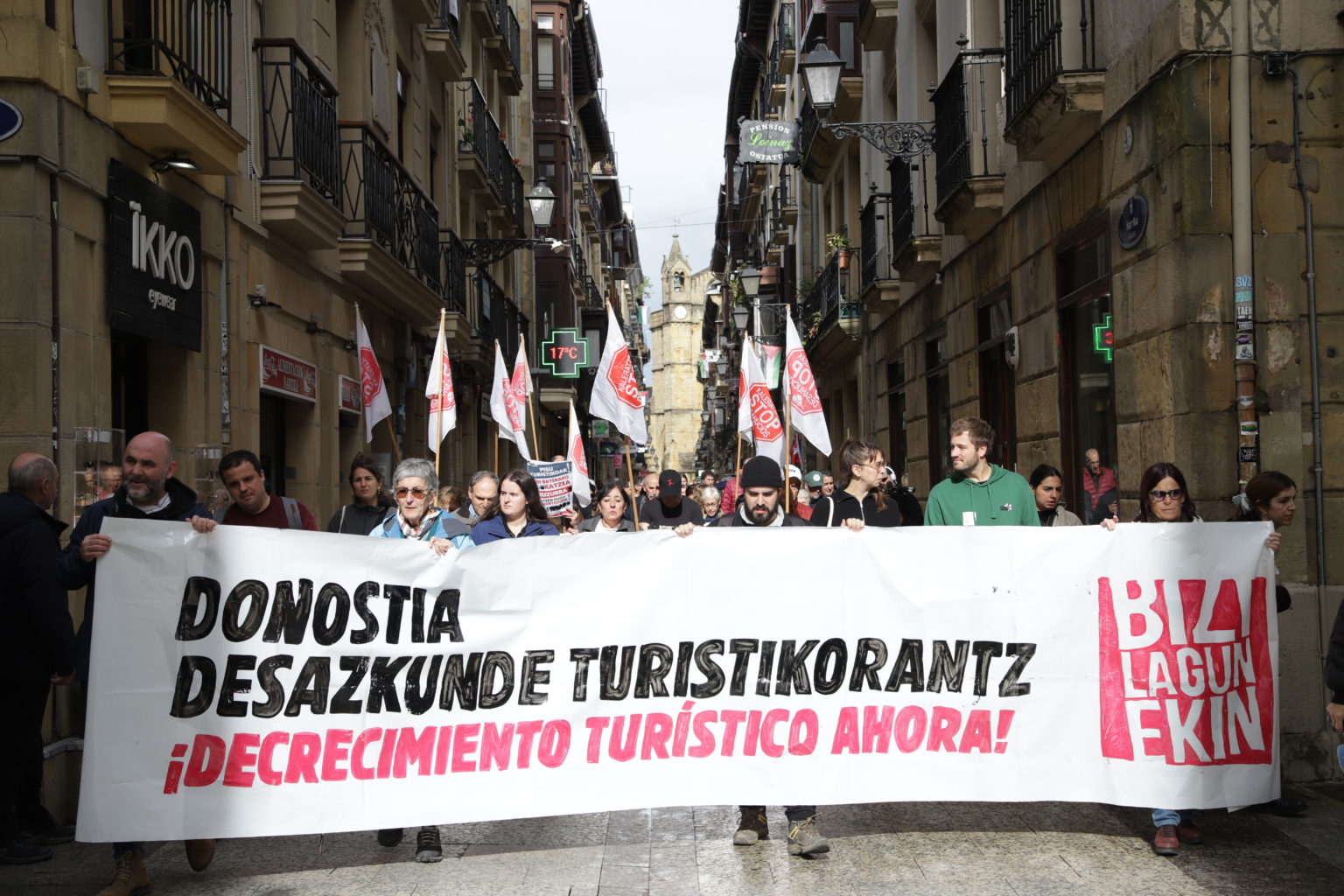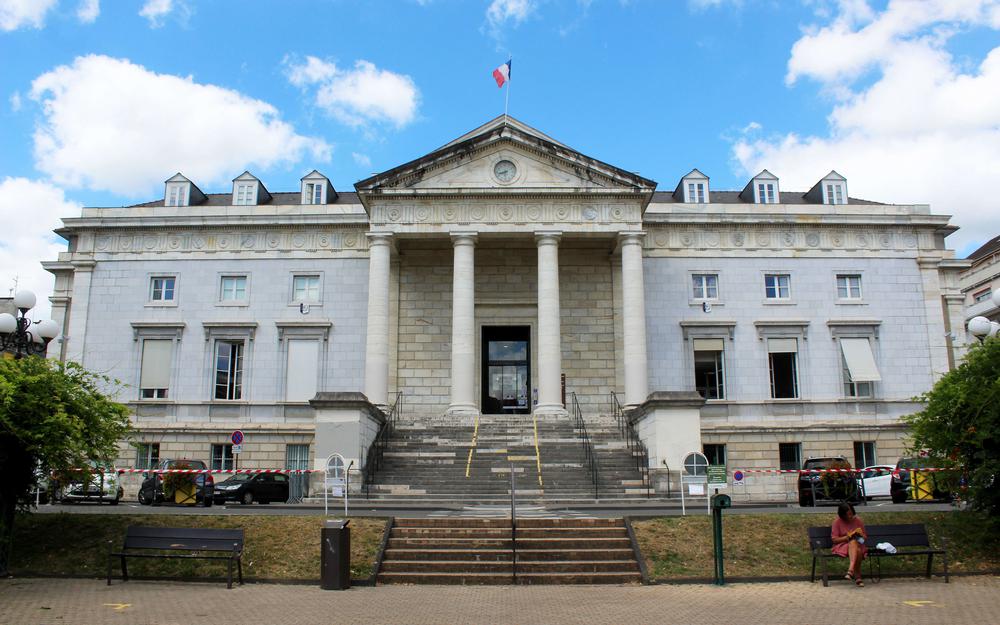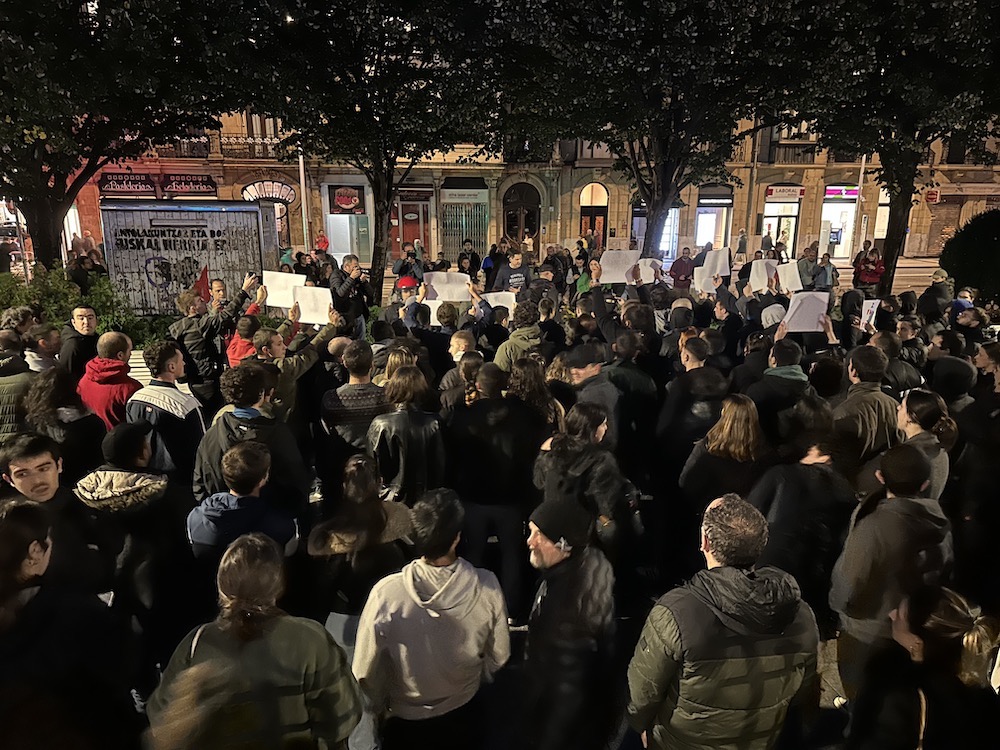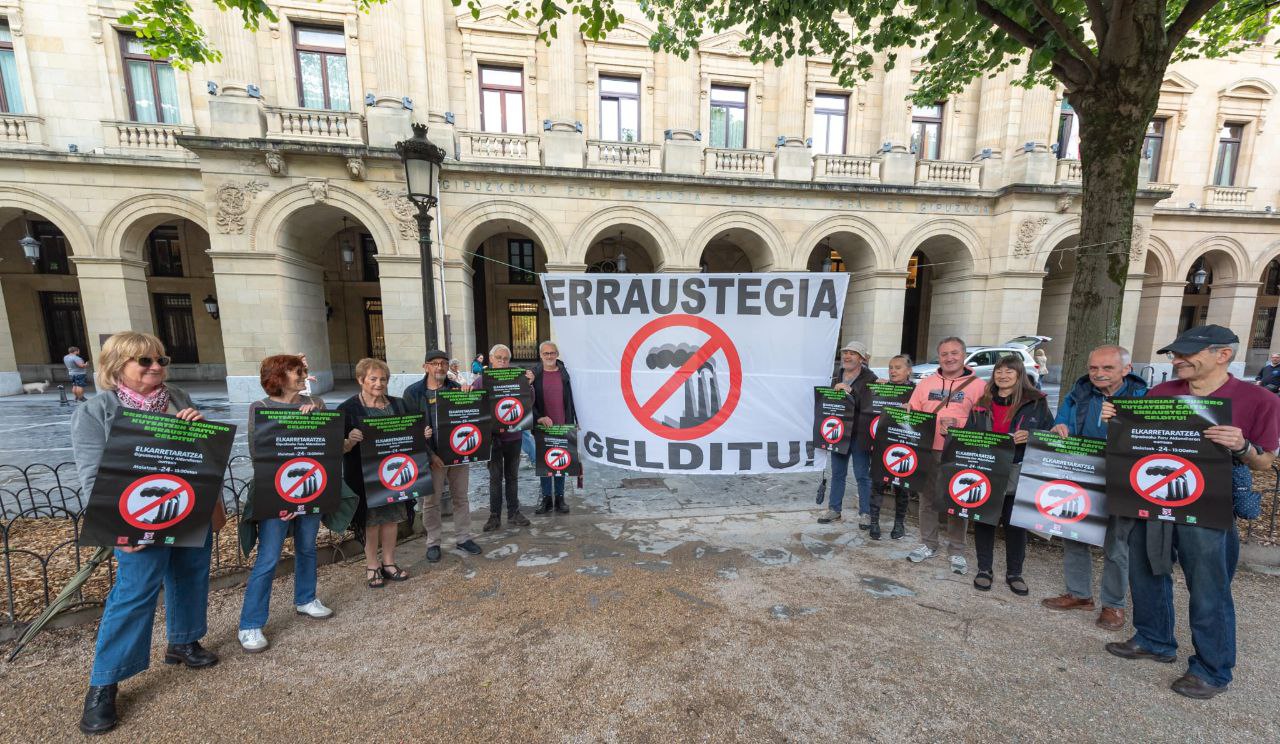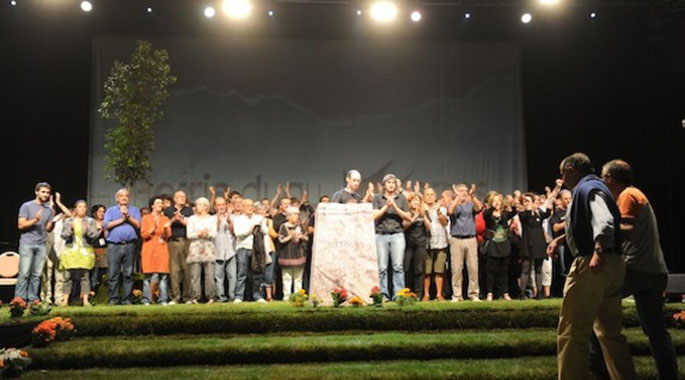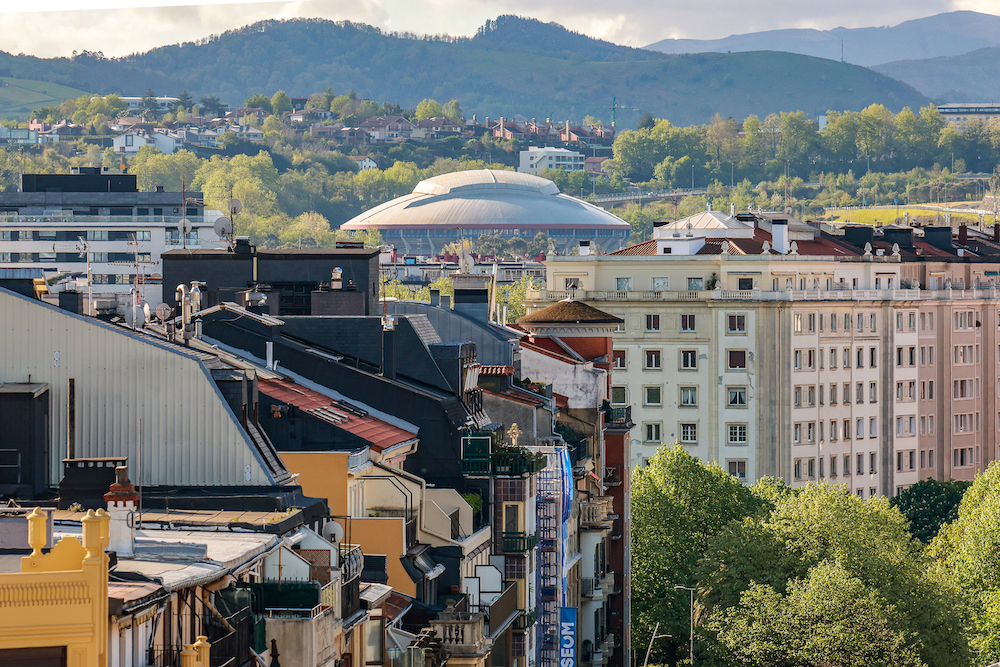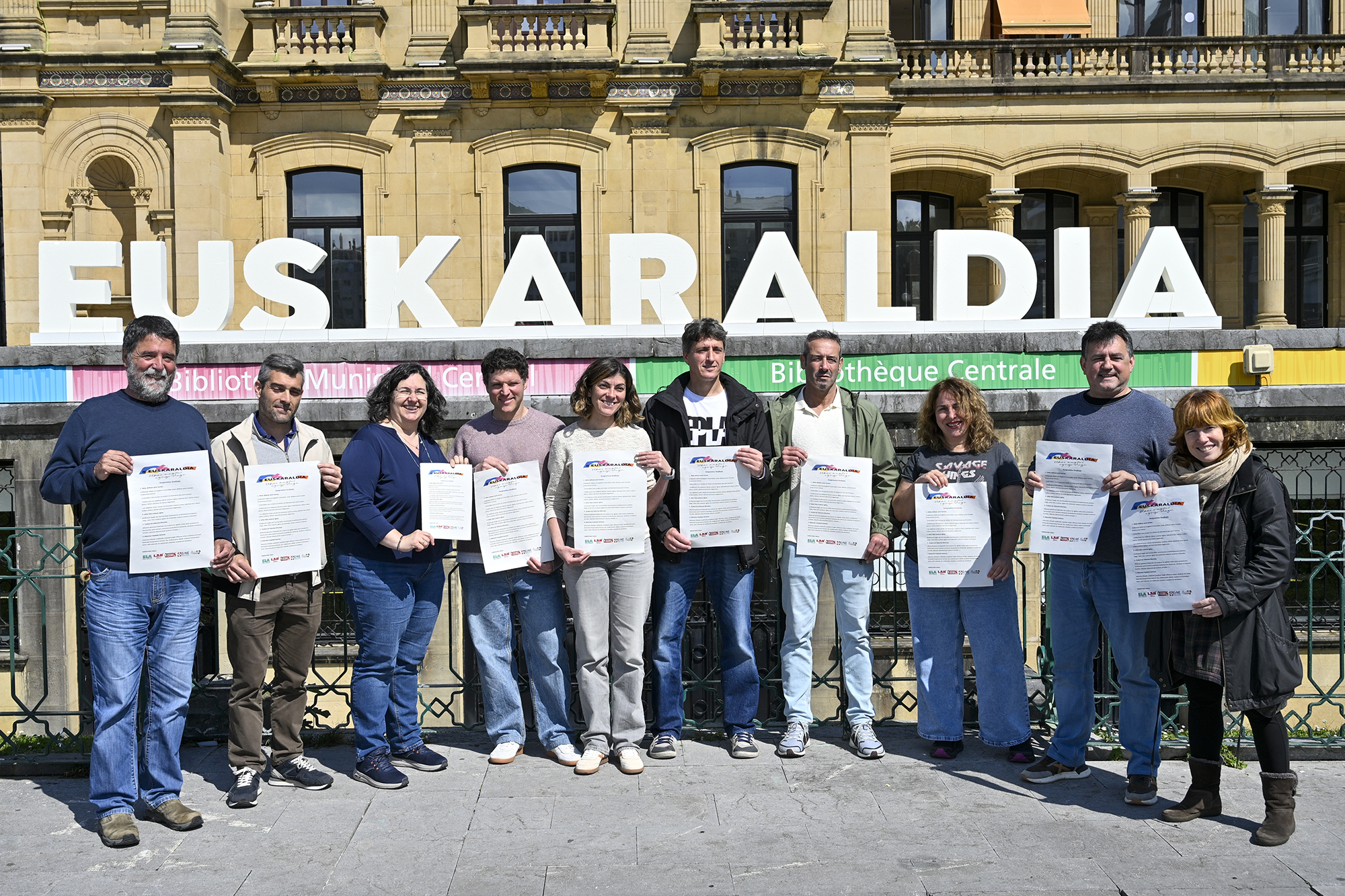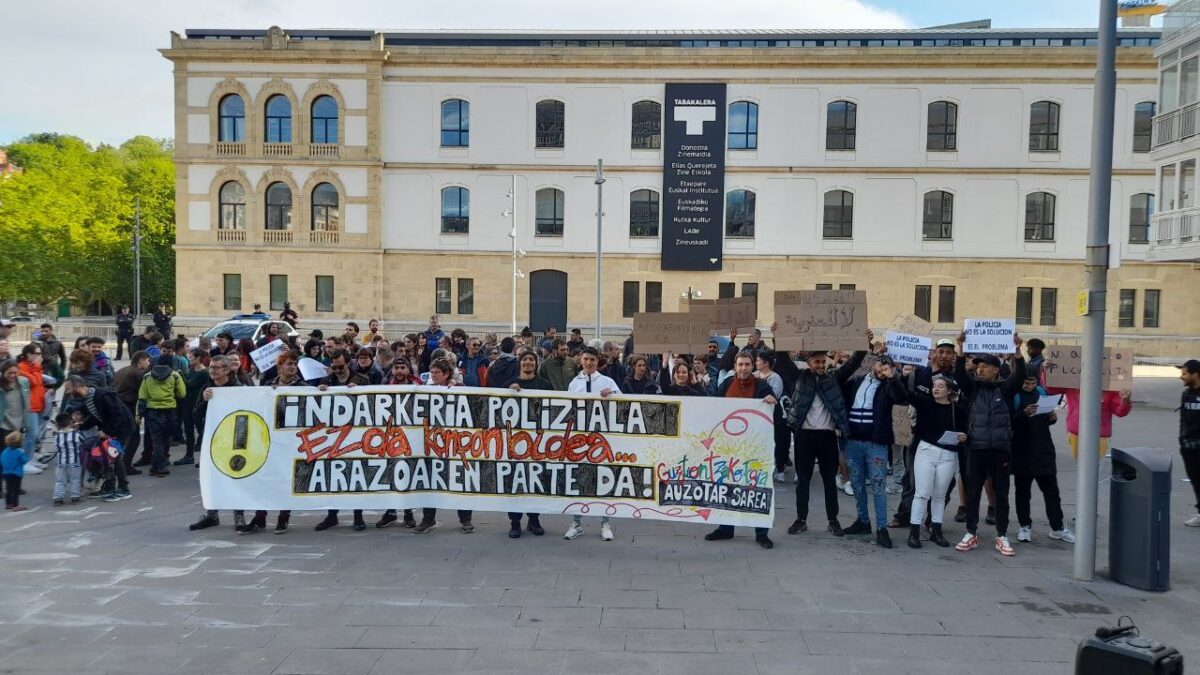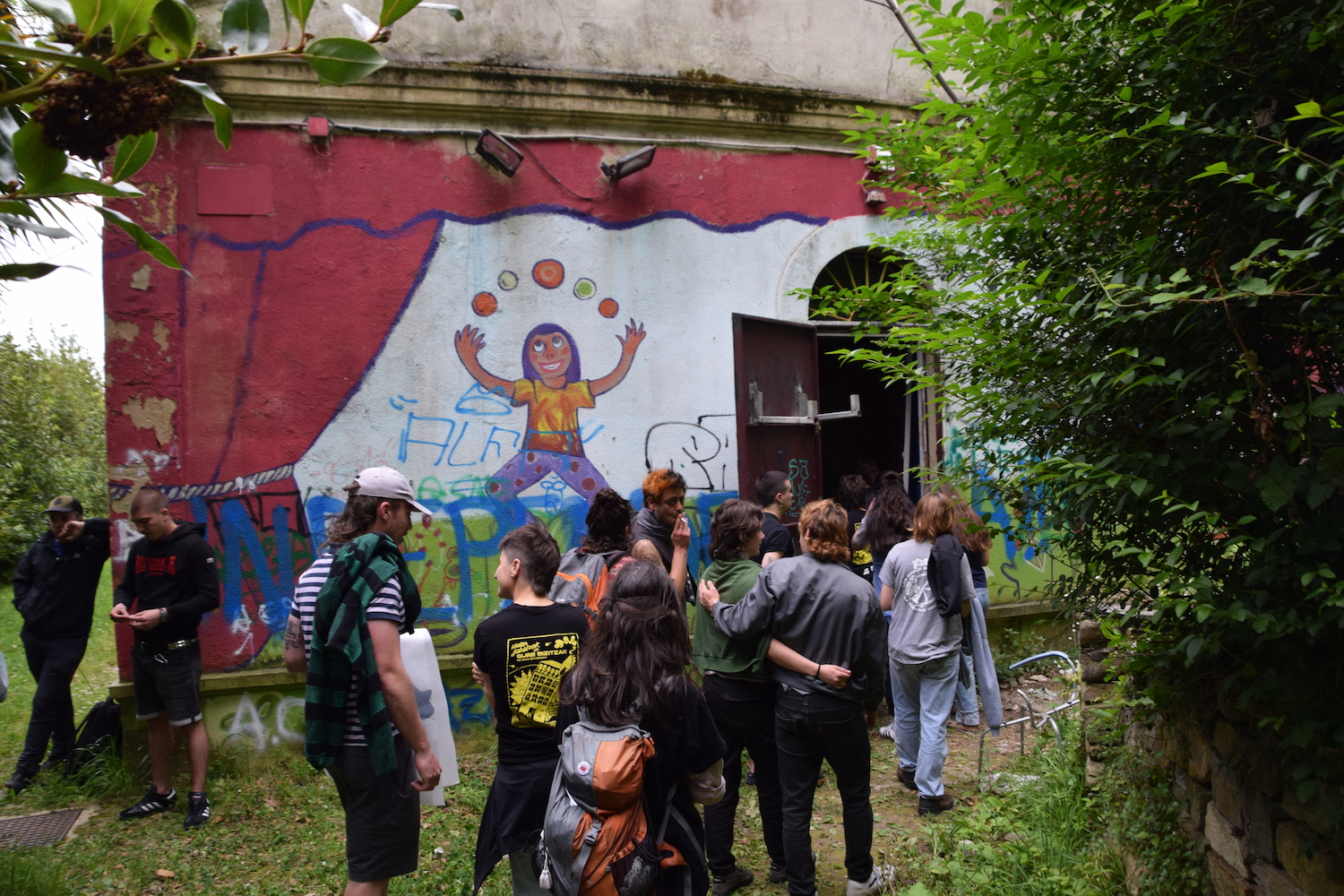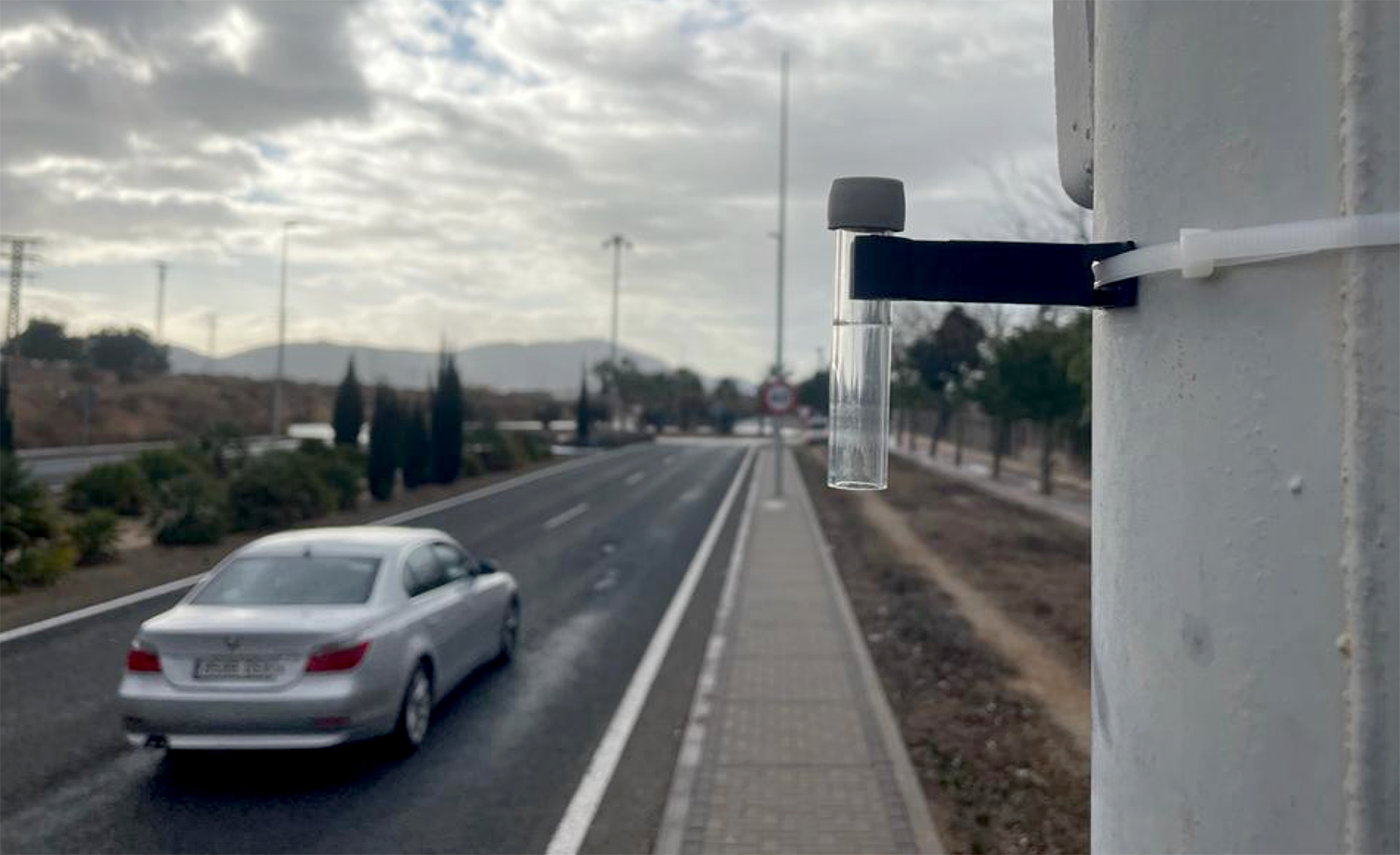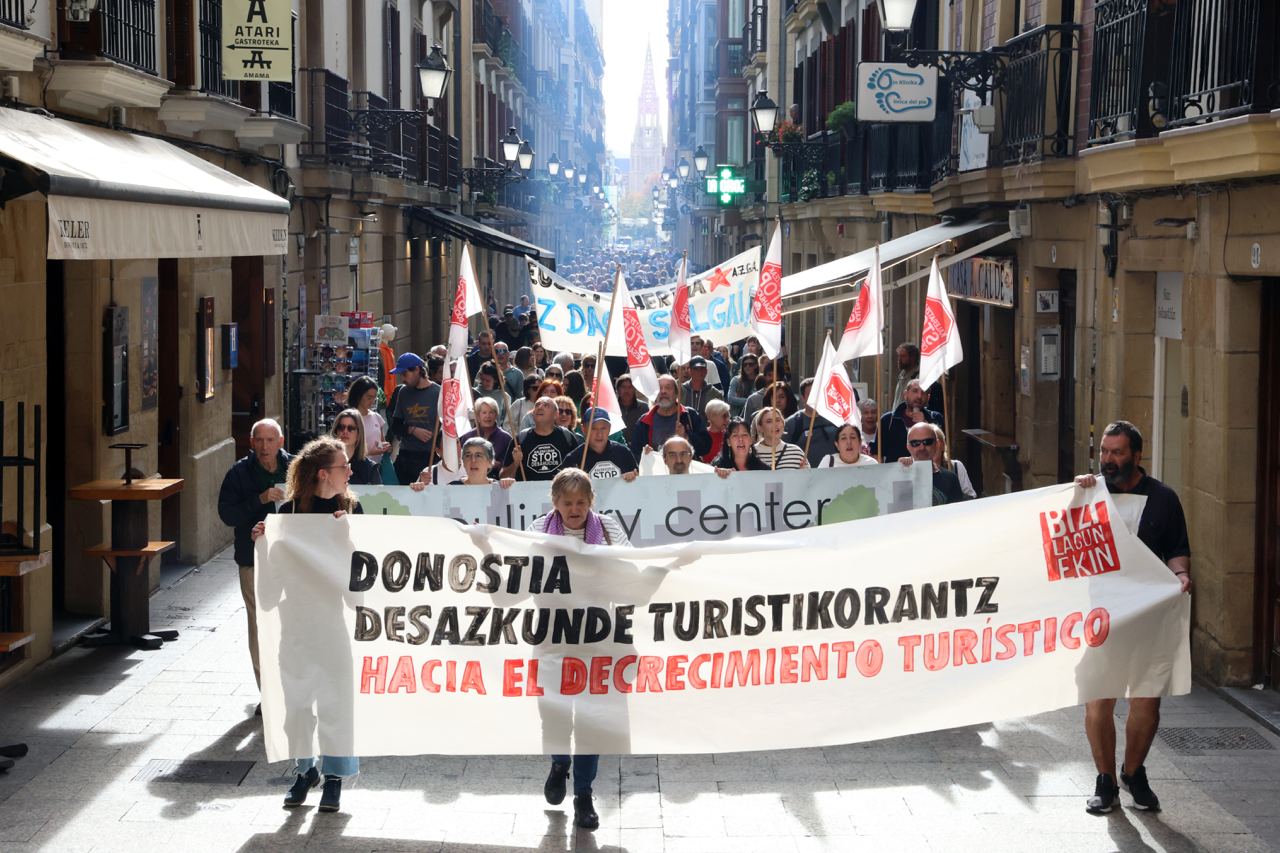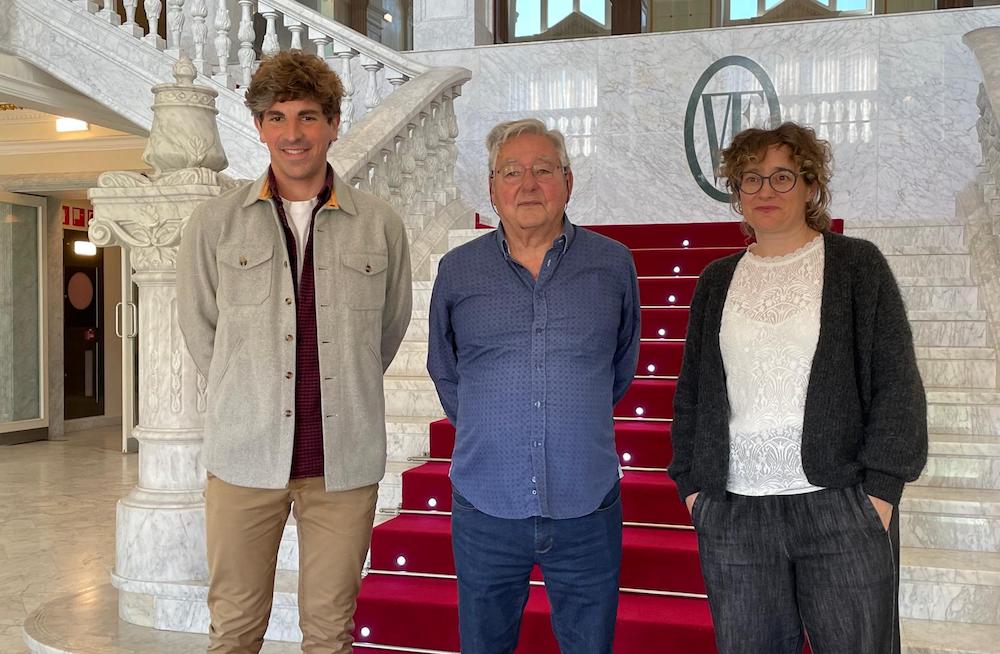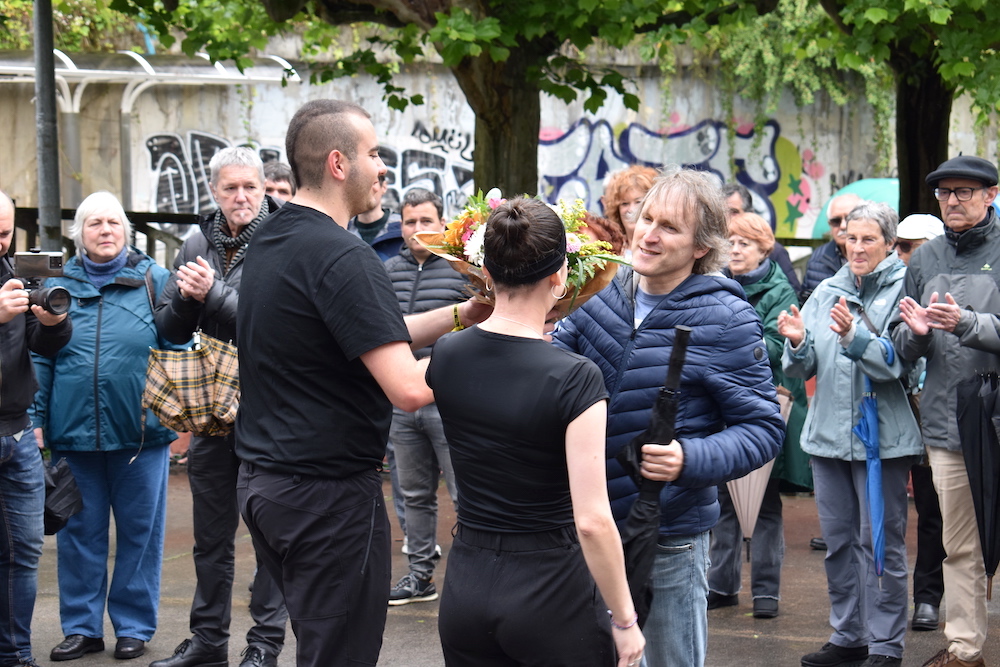San Sebastian accelerates its elitization
- The factual powers of San Sebastian are immersed in a process of transformation of the city with the support of the institutions. In an increasingly expensive city, “strategic projects”, tourist attraction policies and real estate interests that make business with households go hand in hand. Let us take a closer look at what is happening, because surely in a few years the European Capital of Culture 2016 will be different.
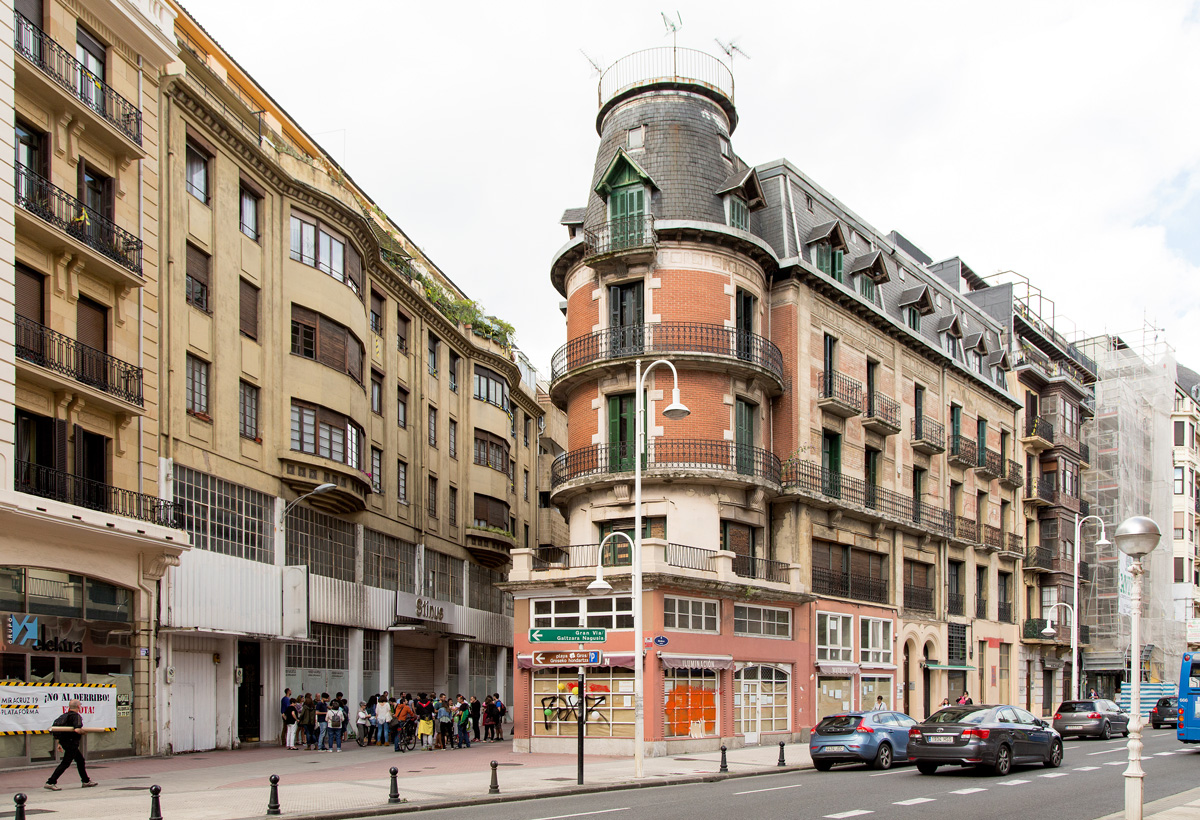
“I believe that San Sebastian is fully attached to the elitist roll and is booming. Living here is clearly impossible. You see that most politicians have agreed, that they are working in that direction. People are against that, but because they know they vote, they don't care. I believe that in Donostia something must be organized against this model of city.”
They are words of Iñigo Etxabe, of the Txanpuene dwarf, in Amara Zaharra, climbing the hill of Aldapeta to the left, looking to one side and seeing the Shell, and on the other, all Amara above Morlans. He explained that until a few decades ago, the dwelling and the land belonged to the Duchess of Alba of Spain. In 1997, the City Hall reached an agreement with Albatar's neighbours and is now owned by the real estate Neinor Homes. They want to demolish the dwelling and build a park and luxury homes on the land they occupy. Etxabe was born in the farmhouse, as did his predecessors. The Etxabe family, who has lived as a tenant for at least the last 150 years, will lose a home of about 1700 years and, moreover, will not see a euro. While others win millions with their home. In the area the excavators work and work in the sunny afternoon of July, within a much larger operation.

In these lands there is also a source and a source dating back to 1800. Even though the years left him buried, the watering hole was classified as the patrimony to be protected until in 2010 it was discontinued without anyone telling it. The IX Congress of Deputies held in June this year in Bilbao. In the Txanpuene Eguna, in addition to gathering some 150-200 neighbors, the spring and landing were unearthed, after the architects of the company and the City Hall had questioned the presence of the abrevadero. “It was a wonderful day, a lot of people came and we ended the day at ease. Many of them didn't know and were astonished to have such a place in the neighborhood. Instead of luxury homes, I would like the building to be kept for service in the neighborhood.”
On the same day and the same afternoon, some 50 people have met in Gros concerned about the future of the Miraculous building 19. On the first day of the Zipotz festivities in the Bilbaíno district, they have surrounded it to denounce the intention to demolish the building of 1888. They have 7,000 signatures against the demolition, and you can see protest signs in many of the neighborhood's shops.
.jpg)
“We have been fighting for four months and we have touched all the doors: Basque Government, Ararteko, all the parties of the City Hall... and we have achieved nothing. They have left us the last opportunity and that’s what we’re going to do: trial,” says one of SOS members Miraculous 19 at the impromptu talk at the end of the act. “We will file a lawsuit in the court emphasizing the architectural value of this house. How is it possible that a protected home until 2010 suddenly loses its protection, at the will of private individuals?” he put the question in the air.
In this building, almost empty, at first you wanted to make a hotel. Subsequently, the Gros Real Estate Agency has reported that 25 homes, other parking spaces and 17 storage rooms are to be marketed. Initially, a “modern” architectural project was presented, which caused great anger in the neighborhood. After negotiating several proposals with the City Hall, on 5 July he was granted a construction licence and in August it has been reported that the building will be demolished. Construction works are expected to be completed within two years and some housing will cost up to EUR 850,000. That is not within anyone's grasp.

“It’s pure speculation, they’ll spend as little as possible to get the most out of homes and make money,” said the members of the association in an interview recently published on the Kulturaldia website. “It’s up to the City Hall to put the building back on the list of protected heritage at one time or another, but they don’t want it.”
The building will be demolished, just as just over half a year ago the gaztetxe Kortxoenea collapsed in the same neighborhood, with a swimming pool to build houses also here. In the latter, the works are paralyzed and chained in the courts, following the complaint lodged by the young people of Kortxoenea about the illegal dismantling.
Where is San Sebastian going?
“What is happening in San Sebastian is more than speculation and turistification than gentrification.” Andoni Egia holds a bachelor’s degree in Geography and an expert in these topics. He has held several master’s degrees and theses on spatial planning, sustainable human development, globalization and gentrification processes. Go to the Donostiarra integrated into a more global logic.
“Production has been globalized worldwide: The Far East has become the factory of the world and the post-industrial West is the center of the world, that is, of the economy.” He has set an example: one thing is thought and designed in Munich, parts are made in many countries, they are assembled in Asia and here we consume in Donostia. For the transport of people and products, the Basque Government is connecting cities around the world with giant ports, the TAV, airports and roads, among others. “But in this globalized production chain, marketing and design are some of the parts that have the most values. It is an immaterial knowledge-based economy. The money raised makes cities compete to create knowledge centers such as the Basque Cullinary Center or the Guggenheim. It takes a Kursaal to do a neuroscience conference and try to start economic activity.” In his words, it is a question of having a node of flows of goods, capital, knowledge and tourists, and for this we must adapt the city.
“San Sebastian is reworking. What creates value in Donostia? Before in Tabakalera they became pure, generating wealth. Now Tabakalera is a cultural center, everything is free, but it moves the city center to Egia, it will bring several artists, it will bring a bar or a restaurant next to it... It touches a point and gradually changes the environment.”
It is true that productive specialization, knowledge and real estate speculation go hand in hand. “The houses are built for these high-level people who want to attract from the outside and the prices are rising, the citizens who cannot enter that league are slowly moving to the periphery, to the exterior neighborhoods or to the neighboring villages.” That elite who is enriching themselves in this production chain attracts San Sebastian and spends money on hotels and houses here, where more and more foreign capital is coming in, starting the circuit again.
– What about citizenship?
– It is not a development model designed for the well-being of citizens.
“What about the alternative?
– Create a new economic model to rebuild the local economic network.
For a greener Donostia
“In the absence of response and representation from our governments, the members of Lore Baratza de Ulia, as well as other social groups and institutions, we are going to maintain an active position in the conservation and life of this park. In this way, we are building the city we want to live in, facing what they want to impose on us, always from the neighborhood level and thinking about the common good”.
.jpg)
The members of the Floral Gardens of Ulía are concerned. The neighbours of Ategorrieta have created a unique ecosystem in this discreet but beautiful area that climbs the hillside of Ategorrieta and is on the left. The City Hall wants to build houses in the area. With the list of adhesions of the citizens and various associations of the city, flowers have been distributed to the City Hall to ask them to protect the park. “The park of the nurseries of Ulía is the only one in Gipuzkoa,” says the Society of Sciences Aranzadi.
“If we had brought it from those countries that we so often looked at to copy anything, the Cultural Capitality would be an icon more than loud but devoid of content. However, as we are born here, as we have built simple and voluntary people, their initiative is reduced and the molds are called into question, instead of giving it the value it has to make the city,” says Leire Rodríguez at the City Hall in favor of a greener Donostia, after the table decorated by posters and plants that have stopped its construction.
“Unfortunately, today’s Donostia-San Sebastián goes to another city model with great speed. It’s going to be a city based on the interests of a few, where short-term consumption and speculation dynamics will make everything that takes time and slow fire jump,” they say.
Many projects on the table

In 2013, a group of citizens achieved recognition with the campaign for the Fine Arts building, with a total of 10,900 signatures. This building, in its 100 years of history, has been home to the theater, the cinema of the neighborhood and the Orfeón Donostiarra. Today she has been empty for 30 years and the building owner, Sade, has a project to make a 4-star hotel and 92 rooms. They have permission and they want to demolish it.
In the street bus stops you can see large real estate ads. Image of a building overlooking the Concha, with football fields and pool. Amenabar installed in November 47 luxury houses that belonged to the center of San Sebastian. It is the urbanization that is taking place on the slopes. Public use of terms such as “luxury” is a new phenomenon, would it affect the end of the armed struggle?
But there are many projects that will influence the day-to-day life of a city about to be approved or underway: We will have to see what impact the remodeling of Anoeta in the Amara district will have, reform the marina and the building that houses the fishermen’s brotherhood in the port, build two hotels on the pier, the hotel of Sagües and the remodeling of the plaza, carry out a gigantic urbanization project in Amara Zaharra in San Bartolomé, all without counting the other hotels that are renting out the city. Besides crossing the center, the metro that will help bring this process to the surrounding villages, the High-Speed Train that will reach the city, along with the decline of small trade, will increase the Garbera shopping center by 25,000 square meters and add 80,000 square meters more to the parking.

Who is driving the city down that road? The Donostia-San Sebastian Urban Strategy Office is responsible for drawing up the Strategic Plans (SP). The Strategy 2020 report Donostia – San Sebastian has been in force since 2010, when the Miraculous building and the sources of the Txanpuene lost their support without anyone knowing it. Once on the website, the user will find the greeting of Kepa Korta, the coordinating director of the initiative. In the introduction of the report, the following can be read:
The city is moving in the direction indicated in the PE2010, with projects and initiatives underway or implemented in general: Teatro Victoria Eugenia, Museo San Telmo, Asociación de Turismo San Sebastián, Bordillo 2, Biopolo, Polo de Innovación Audiovisual, Ciudad de la Ciencia, Basque Culinary Center, Casa de la Paz, etc. (…) The change in the PE2010 city model needs to be monitored. (…) Major infrastructure will develop over the next decade: High Speed Train, Metro, Tabakalera, Bus Station, Toulouse-Pasaia... but this time will be content time, more than containers. Local infrastructures (cultural centres, sports centres, social centres, health centres, education...) have been properly built, but the maintenance capacity of the system is coming to an end, so no new infrastructure is foreseen for the coming years. However, one sees the need to deepen these intangible contents of the city and in the new project there will be forces with two axes that define a new model: culture and science.

In order to analyze the urban and economic transformation of cities within the framework of this global economy, several cities have created metropolitan observatories such as Barcelona and Madrid. In Donostia-San Sebastián there is also a group that is gathering and fine-tuning the project. Map cities by neighborhoods, check how the rentals are, how far the shops have entered, tourism, who is behind the urban processes and in the background, to see who sends the site and give tools to popular movements.
“And in the face of this elitization of the city, what can citizens do?” we ask Andoni Egia. “Raise awareness of what is happening, try to make projects more expensive through direct actions and put on the table alternatives.”
“I am 52 years old and I have spent 52 years here. I haven't received a penny of the farmhouse, and I've been here every day. We are here because it is our house.” Back to Txanpuenea Hamlet, Iñigo Etxabe recognizes that they are very low in mood. “I don’t want to think much, when you throw it out to make houses for the rich, I’m going to shed a few tears. Now we are in the courts, but basically you don’t want to be conscious.”
Two people regret that at dusk, in the Old Town, they get to work with beer. This neighborhood has also changed a lot in recent decades. "The city is being chosen. The houses of Donostia-San Sebastián are being offered to the richest in Spain and the rest of the world. They want to make this a Nice, without realizing it's a bubble. ‘Everything is safe,’ they insist, ‘invest in this and you’re going to get rich.’ Until it falls back. In addition, if you dismantle local economic networks, pollute and deteriorate land, where are you going to bring food when oil runs out? Where do we buy it? In Garbera?” says one worried.
“Yes, in the meantime, the very companies of all life are getting richer. I, after Kortxoenea, see it very clear – the other has replied – it is a mafia, we have to do something.”









